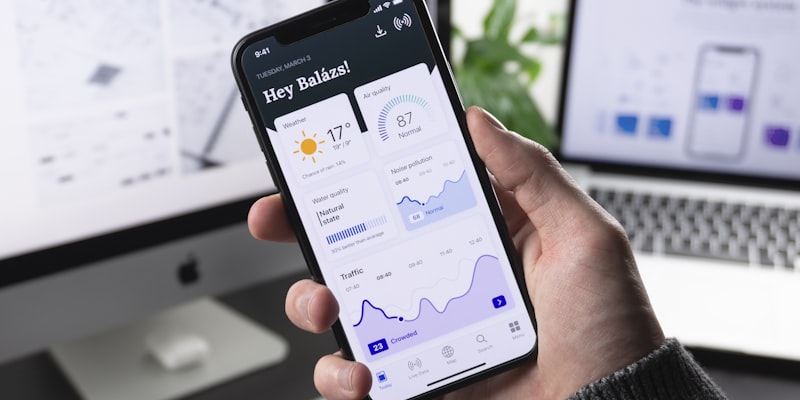
Animations can transform a static interface into an engaging, delightful user experience. The right animations guide users' attention, provide feedback, and create a sense of polish that sets your application apart.
Why Animation Matters in React Apps
Well-crafted animations serve multiple purposes:
- User Guidance: Direct attention to important elements
- Feedback: Confirm actions and state changes
- Polish: Create professional, premium feeling interfaces
- Engagement: Keep users interested and interactive
Top React Animation Libraries
1. Framer Motion
Framer Motion is a production-ready motion library for React with a simple, declarative API.
import { motion } from "framer-motion";
export default function AnimatedButton() {
return (
<motion.button
whileHover={{ scale: 1.1 }}
whileTap={{ scale: 0.9 }}
initial={{ opacity: 0 }}
animate={{ opacity: 1 }}
className="px-6 py-3 bg-blue-500 text-white rounded-lg"
>
Click me!
</motion.button>
);
}Key Features:
- Declarative animations
- Gesture support
- Layout animations
- Server-side rendering compatible
2. React Spring
A spring-physics based animation library that provides smooth, natural feeling animations.
import { useSpring, animated } from "@react-spring/web";
export default function SpringAnimation() {
const styles = useSpring({
from: { opacity: 0 },
to: { opacity: 1 },
});
return <animated.div style={styles}>I will fade in</animated.div>;
}3. React Transition Group
Manage component states over time, specifically designed for managing component mounting and unmounting.
import { CSSTransition, TransitionGroup } from "react-transition-group";
export default function ListTransition({ items }) {
return (
<TransitionGroup>
{items.map((item) => (
<CSSTransition key={item.id} timeout={500} classNames="item">
<div>{item.text}</div>
</CSSTransition>
))}
</TransitionGroup>
);
}Animation Best Practices
Performance Considerations
- Use
transformandopacityfor better performance - Leverage GPU acceleration
- Avoid animating layout properties when possible
- Use
will-changeCSS property judiciously
UX Guidelines
- Keep animations fast (< 300ms for micro-interactions)
- Provide reduced motion options for accessibility
- Use easing functions that feel natural
- Don't overdo it - subtle is often better
Advanced Animation Patterns
Staggered Animations
Create cascading effects with staggered timing:
import { motion } from "framer-motion";
const container = {
hidden: { opacity: 1, scale: 0 },
visible: {
opacity: 1,
scale: 1,
transition: {
delayChildren: 0.3,
staggerChildren: 0.2,
},
},
};
const item = {
hidden: { y: 20, opacity: 0 },
visible: {
y: 0,
opacity: 1,
},
};
export default function StaggeredList({ items }) {
return (
<motion.ul variants={container} initial="hidden" animate="visible">
{items.map((text, index) => (
<motion.li key={index} variants={item}>
{text}
</motion.li>
))}
</motion.ul>
);
}Page Transitions
Create smooth transitions between routes:
import { AnimatePresence, motion } from "framer-motion";
import { useRouter } from "next/router";
export default function PageTransition({ children }) {
const router = useRouter();
return (
<AnimatePresence mode="wait">
<motion.div
key={router.route}
initial={{ opacity: 0, x: -200 }}
animate={{ opacity: 1, x: 0 }}
exit={{ opacity: 0, x: 200 }}
transition={{ duration: 0.3 }}
>
{children}
</motion.div>
</AnimatePresence>
);
}Conclusion
Animation libraries for React have matured significantly, offering powerful tools to create engaging user experiences. Whether you choose the declarative approach of Framer Motion, the spring-physics of React Spring, or another solution, the key is to use animations purposefully to enhance your user interface.
Remember to prioritize performance, accessibility, and user experience over flashy effects. The best animations are often the ones users don't consciously notice but make the interface feel more responsive and polished.
Read more

21 Best Free React Components Libraries To Kickstart Projects
Discover the most powerful and popular React component libraries that will accelerate your development workflow and help you build stunning UIs.

21 Best React Landing Page Templates To Inspire Yours
Discover stunning React landing page templates and learn the design principles that make them convert visitors into customers.

21 Best React Native Libraries You Should Know About
Explore essential React Native libraries that will streamline your mobile app development and enhance functionality.
